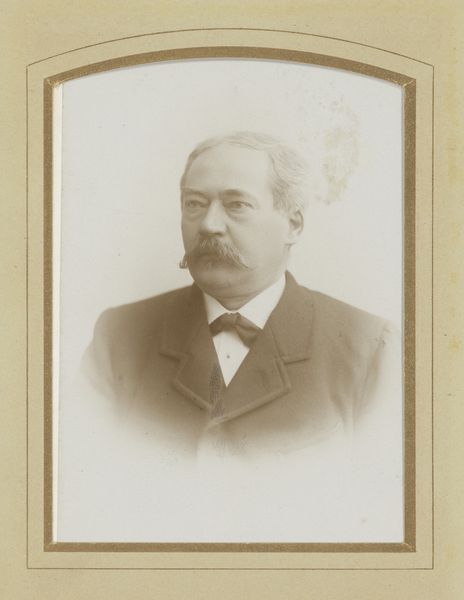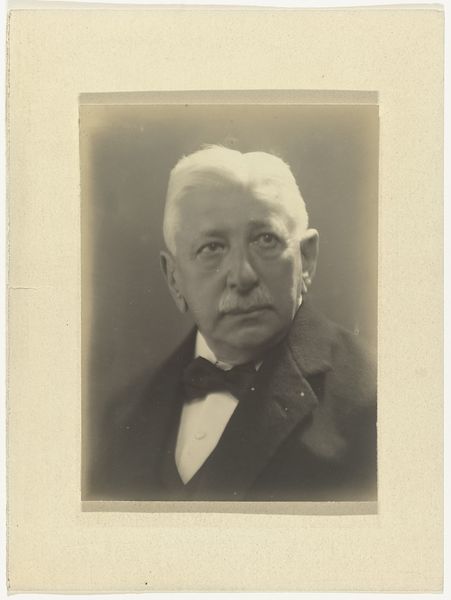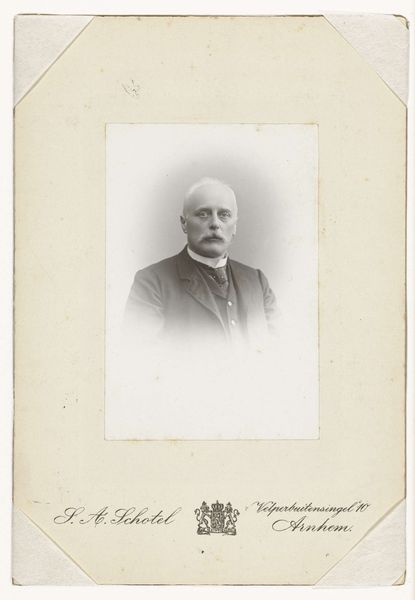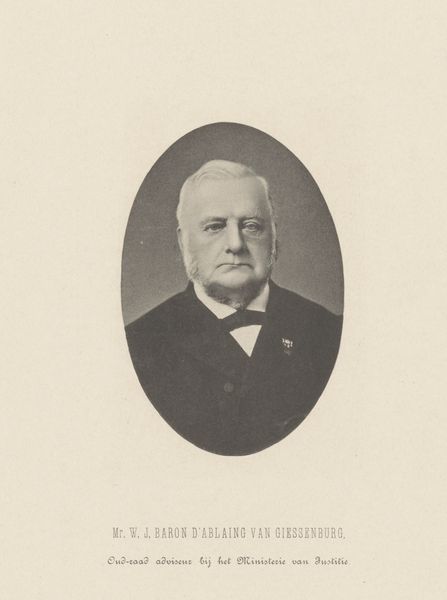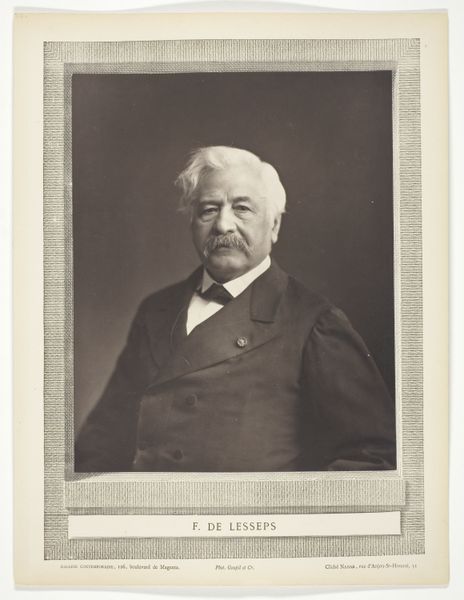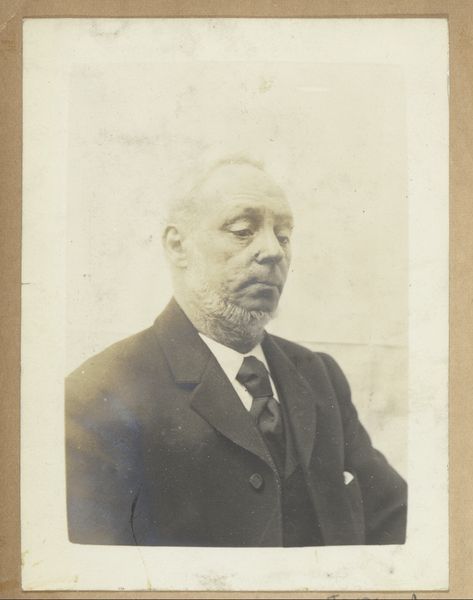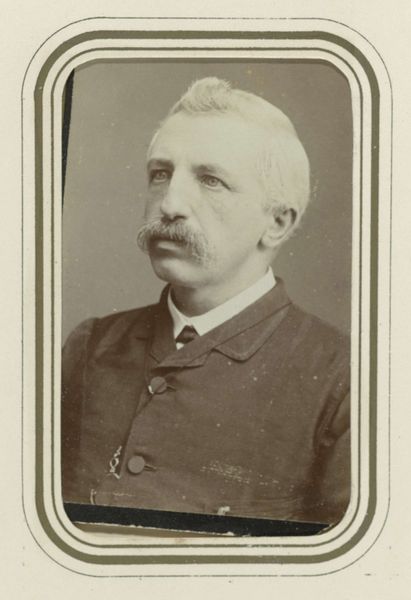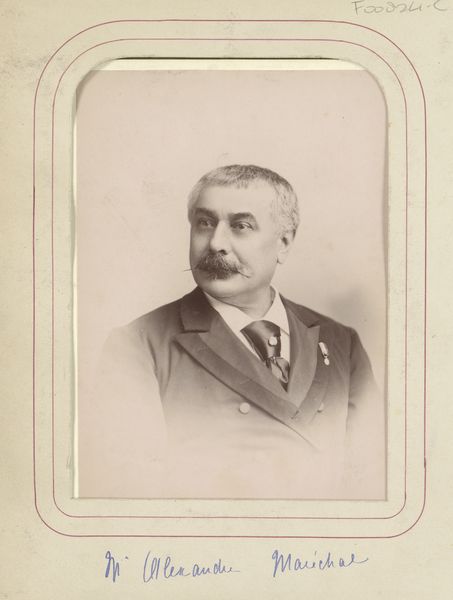
Portret van Ferdinand de Lesseps, ingenieur, financier en diplomaat c. 1890 - 1900
0:00
0:00
photography
#
portrait
#
photography
#
19th century
#
realism
Dimensions: height 163 mm, width 125 mm
Copyright: Rijks Museum: Open Domain
Curator: This is a portrait of Ferdinand de Lesseps, the engineer, financier, and diplomat, captured sometime between 1890 and 1900 by Nadar. It’s part of the Rijksmuseum’s collection. Editor: There’s an austere formality here, even a hint of melancholy in the subtle tonalities and the somber gaze. The octagonal frame emphasizes the weight of his presence. Curator: Indeed. Lesseps, having successfully constructed the Suez Canal, stands as a towering figure of 19th-century ambition and colonialism. This portrait comes later, shadowed by the Panama Canal disaster. The pose speaks to a man conscious of his legacy, for better or worse. Editor: The tonal range is fascinating. From the bright whites of his hair and that striking mustache, down to the darkest folds of his suit, we move through nearly imperceptible gradations. This creates an intense sense of depth, both literally and figuratively. It hints at hidden complexities of character, doesn’t it? Curator: I agree. Nadar was very adept at using photography to convey social status and personality. The image carries an implicit understanding of the dynamics of power and the social expectations of prominent men. Editor: The composition is rather interesting in itself. It isn't the most successful I have seen, but its off-balanced presence communicates frailty. The missing lower left section is like an architectural failure and a testament to imperfection in all things. Curator: An apt reading. Perhaps unintentionally, it mirrors the very real imperfections and controversies surrounding his later endeavors and the larger colonial projects of the era. It makes the viewer question what it means to monumentalize these people, despite ethical concerns. Editor: Thinking about its aesthetic qualities as a work of art, the contrast plays an important part of how it has meaning and depth. It provides layers of perception and is enhanced by light and shadows. Curator: It’s a fascinating work precisely because it’s not just about a man, but a system, an age, and its aspirations. It stands today as a reminder of the interplay of ambition and responsibility, especially in projects that disproportionately affected colonized peoples. Editor: I was moved by the subtle contrasts, which, once identified, bring the viewer that much deeper into what Lesseps’ legacy would mean.
Comments
No comments
Be the first to comment and join the conversation on the ultimate creative platform.
